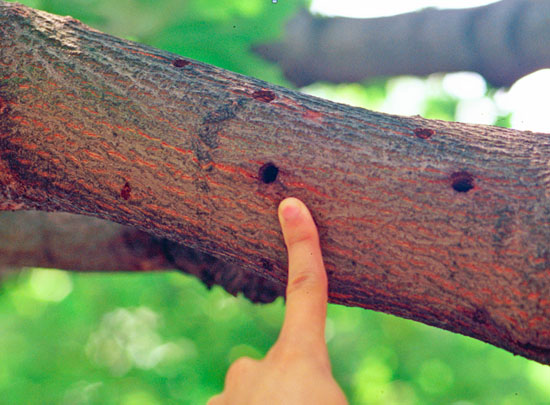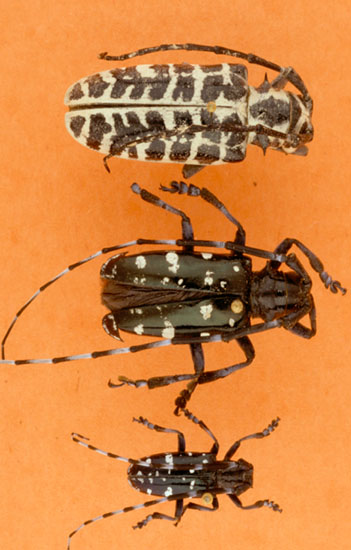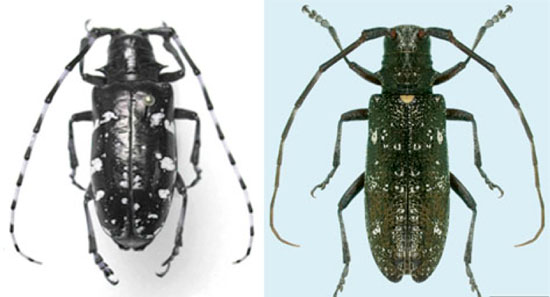Issue 13, July 30, 2010
Asian Longhorned Beetle: Your Vigilance Can Save Trees
The Asian longhorned beetle (Anaplophora glabripennis), a native of China, was brought to the United States in wood packing material. This insect is a serious pest even in its native range. Here in the United States, where it has no natural predators, it is of even more concern. The Asian longhorned beetle feeds on hardwood trees including maple, birch, horse chestnut, poplar, willow, elm, ash, and black locust.
Asian longhorned beetles are 1 to 1.5 inches long. Their bodies are shinny and black with white spots. Another conspicuous characteristic is their very long, white banded antennae that are 1½ to 2½ times their body length. The females will chew depressions into the bark of hardwood trees to lay eggs. Each female beetle can lay between 35 and 90 eggs. After 10 to 15 days, larvae will emerge from the eggs and feed under the bark of the tree until the following spring when they pupate. The damage done from the feeding larvae severs the pathways the tree uses to transport nutrients and water, ultimately killing the tree. In the summer, the beetles emerge as adults, leaving exit holes about the size of pencil erasers. These exit holes can be seen all over an infected tree and are an important symptom.

Asian Longhorned Beetle exit holes (photo courtesy invasive.org).
The Asian longhorned beetle is capable of doing vast amounts of environmental and economic damage by attacking American hardwood trees. Even though these beetles can fly distances greater than 40yards, they do not usually spread very fast on their own. However, human activities such as the domestic transportation of wood products and use of non-local firewood could spread these beetles very quickly.
The government has programs to protect our trees, such as the quarantine of infected areas, treatment of transported wood products, and the replanting of areas that have lost trees to this pest. However, the successful control of this pest will be dependant on the vigilance and cooperation of business owners and community members. Do your part to protect our trees by adhering to any government protocol about transporting wood products, using local firewood, and keeping an eye out for this pest of its warning signs.

A Cottonwood Borer (top) compared to a male (middle) and female (bottom) Asian Longhorned Beetle(photo courtesy invasive.org).

Invasive Asian Longhorned Beetle (Left) compared to a Native Whitespotted Sawyer (Right)(photo courtesy invasive.org).
August has been declared Asian Longhorned Beetle Awareness month. Though as of 2007, Asian longhorned beetles are believed to have been eradicated in Chicago, we continue to keep an eye out for this invasive insect. When looking for the Asian longhorned beetle, you may run into some of its local look-a-likes such as the cottonwood borer or the whitespotted sawyer. If you think you have spotted an Asian longhorned beetle, please contact the Illinois Cooperative Agricultural Pest Survey (CAPS).--Irenka Carney and Kelly Estes
Author:
Kelly Estes